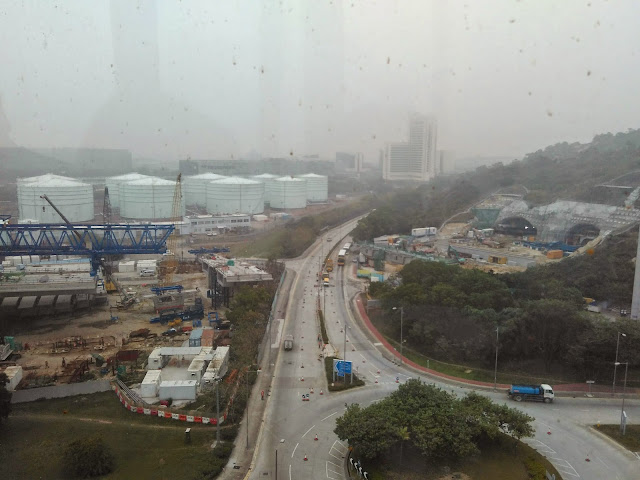Built on top of the hill on Lantau Island, the Big Buddha is meant to be visible from afar, and at its base provide amazing views of Lantau. Unfortunately, today was a very cloudy day (it didn't start out that way, and the weather prediction was largely incorrect), and there was very poor visibility. So poor, that it was not possible to see the cable car in front, and only make out the shadows of the cable cars going in the opposite direction.
The hilltop is easiest to reach by the 5.7 Km cable car, which hints at some spectacular views on clear days. On the cloudy day such as today, it provided an eerie, horror film like atmosphere, with no land or cable visible.
The Buddha was built fairly recently (in the late 1980s IIRC), by the Po Lin Buddhist monastery located also on top of the hill. The cable car drops you off at the "village" which is basically a collection of tourist shops.
One of the things I find interesting about Chinese Buddhism is the amalgamation of Chinese and Indian aspects. This is quite well seen in the monastery itself, as well as then approach to the area involving a path guarded by the 12 Divine Generals, some of whom are also gods in Hinduism.
The big Buddha statue is a long walk up steps - and the platform on top features 6 statues of devotees, a small museum (with an amazing panel painting on the life of Buddha on the second floor) and the Buddha itself - surrounded by fog today.
The monastery is also interesting - the new Hall of 10 Thousand Buddhas puts mist rappers to shame on its bling, while there are amazing dragon carvings on the pillars outside the building.
The last part of the area is the "Path of Wisdom", where the Prajnaparamita (Perfect Wisdom) Sutra is engraved on massive logs arranged in the shape of infinity.

















































